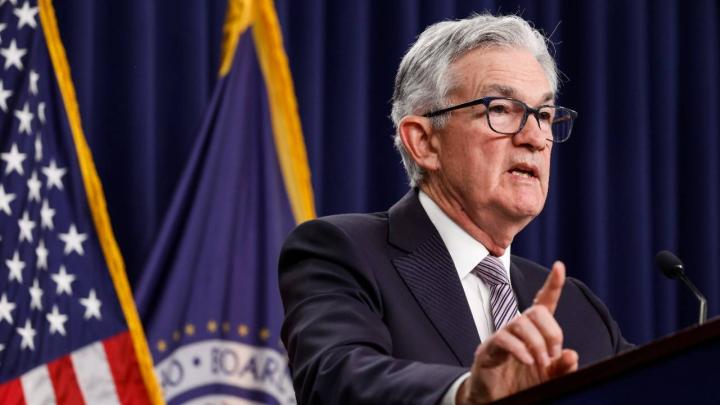When two allies who pride themselves as the "world's largest democracies" swing their tariff axes at each other, is this truly a decisive break or a carefully calculated extreme extortion?
As of August 7, 2025, tensions between Washington and New Delhi are approaching a boiling point. With the countdown advancing, the 21-day window for the United States to impose up to 50% punitive tariffs on billions of dollars worth of Indian goods is already half over. This is no longer an ordinary trade friction, but a perfect storm that involves trade, sovereignty, great power competition, and leadership styles. So, will this crisis that seems poised to plunge US-India relations into an abyss truly end in mutual destruction? Or are all these turbulent waves merely a grand prelude to a high-stakes "chicken game"?
"Trade Deficit" Is Just a Pretext - What's the Real Trigger Hidden in the Ledger?
On the surface, the United States' reason for wielding the tariff stick is simple and crude: an imbalanced trade ledger. In 2024, the US goods trade deficit with India reached $45.8 billion and continues to expand. This constantly fluctuating deficit became the most direct evidence of "unfair trade" in Washington's eyes. **But the truth often hides in selectively ignored corners**. This report reveals a key fact deliberately muted by political narrative: in service trade, the US is almost completely balanced with India, even with a slight surplus of $102 million in 2024. If goods and services are totaled, considering the US's massive advantages in intellectual property and financial services, who's truly gaining is debatable. This "selective focus" that only discusses goods deficit while ignoring service surplus is like a clumsy magician trying to attract all your attention with one hand while performing the real trick with the other. It reveals the first essence of this conflict: the so-called trade deficit is more of a mobilized "excuse" than a root cause. So what's the real "detonator" of this storm? The answer points to the shadow of the Kremlin.
"Blood Transfusion for Putin"? Geopolitics Is the Real Knife
If trade deficit is the chip on the table, then the increasingly heated energy trade between India and Russia is the true trigger of this crisis. Data doesn't lie. Before the Ukraine war, Russian oil in India's import basket was almost negligible (only 0.2% in 2021). By 2024, this number has surged to over 35%, with Russia leaping to become India's largest crude oil supplier. This dramatic "Russian pivot" has completely touched Washington's most sensitive nerve. The US directly points its spear at New Delhi, accusing it of "providing blood transfusion for Putin's war machine" and directly linking an additional 25% tariff to India's Russian oil purchases. At this point, the nature of the conflict fundamentally changes. This is no longer a technical discussion about trade balance, but a naked geopolitical coercion. Washington is trying to forcibly turn India's diplomatic steering wheel using economic leverage. New Delhi's response is equally fierce, directly denouncing the US approach as "unfair, unreasonable, and absurd". India believes that purchasing cheap oil is responsible for the energy security of its 1.4 billion citizens and is a legitimate national interest. More interestingly, India directly plays the "hypocrisy card", asking the US and EU why they condemn India while continuing to import critical Russian commodities like uranium and fertilizers. When the conflict escalates from economic accounts to a battle of sovereignty and dignity, any compromise becomes extremely difficult. This is the core of the current deadlock: one side believes you're "betraying", while the other believes you're "bullying".
Predictable "Unpredictability": Do You Really Understand Trump's Script?
To predict the outcome of this crisis, one must understand the unique, seemingly crazy yet systematic negotiation playbook of the U.S. President. Its core tactic can be summarized as: **Actively creating a crisis, setting a painful final deadline, thereby forcing the opponent into a corner to extract maximum benefits**. Directly threatening to double tariffs from 25% to 50% is a typical extreme pressure tactic, aimed at telling the world: I mean business. However, behind this aggressive posture, the real goal is not to completely destroy the opponent, but to reach an agreement that can be packaged as a "great victory". Many analysts point out that all the roaring and threats are to gain ultimate advantage at the negotiating table. The deliberately left 21-day "window" is the best proof. It is not an insurmountable wall, but a carefully designed negotiation space. The essence of this approach is to satisfy domestic political performance with the harshest rhetoric (such as belittling India's economy as a "dead economy") while maintaining full transaction flexibility in implementation details. Understanding this, we can see that the 50% tariff is a Damocles sword hanging over India's head, but the White House's goal may not be to let this sword fall, but to use its deterrent power to extract maximum concessions from India.
Sovereignty and the Difficult Choice of Reality: Is New Delhi Quietly Preparing an "Exit"?
For India, this is an extremely painful ordeal. The United States is its largest export market, and a 50% tariff is enough to paralyze multiple pillar export industries such as textiles, jewelry, pharmaceuticals, and electronics. Calculations suggest this could directly drag down 0.3% to 0.4% of India's GDP growth in the current fiscal year. The economic pain forces New Delhi to weigh between upholding the principle of "strategic autonomy" and brutal economic reality. Although the Indian Foreign Ministry speaks of "taking all necessary measures to protect national interests", reports suggest the government is quietly evaluating potential concessions to break the deadlock in negotiations by month's end. These potential concessions might include promising increased purchases of U.S. agricultural products and energy, or agreeing to gradually reduce oil imports from Russia at a future point. This is the most subtle part of this game: U.S. extreme pressure precisely targets India's economic dependence on the U.S. market. India must calculate the optimal solution of "how much tactical compromise to exchange for strategic autonomy".
When AI Joins the Game: Probabilities from the Future and Market Frenzy
In this complex global chess game where human analysis always seems to waver between "possible" and "perhaps", what would we see when inputting all variables—trade data, geopolitical signals, even leaders' unique styles—into a more powerful brain? Recently, a prediction model called **TuringAI**, after synthesizing massive geopolitical and economic event data, provided a stunning quantitative prediction for this core question. It believes there's a 65% probability that the U.S. will impose new or higher tariffs on India before August 2025. This cold number is not just an AI simulation; it instantly ignited the intelligent market that trades in insights. On forward-looking prediction platforms like **TuringMarket**, "August Storm: Will U.S.-India Tariffs Escalate Again?" has become one of the hottest topics. Thousands of experts, traders, and well-informed observers are expressing their judgments by betting real money. Market sentiment fluctuates dramatically with every tweet from Washington and every response from New Delhi. This is no longer a distant discussion but a real-time clash of thoughts—collective public intelligence continuously verifying, challenging, and even trying to beat the 65% probability given by AI.
Final Prediction: The Storm Will Come, But It Won't Be the End of the World
Synthesizing all information, including the AI-provided probability, the final outcome is likely not a simple "yes" or "no". The possibility of 50% destructive tariffs remaining in effect long-term is low. This would not only devastate India but also backfire on the U.S. economy. More importantly, completely pushing India, a "cornerstone" of the Indo-Pacific strategy, into the Russo-Chinese camp would be a disastrous strategic failure for the U.S. Therefore, the most probable scenario is...
Last-Minute Tense Negotiations: Before the August 27th deadline, both parties will engage in high-intensity closed-door negotiations.
India Offers a "Step": India will propose a "face-saving" compromise plan, including some substantial procurement commitments and symbolic market openings.
US Announces "Victory": The White House will declare a major victory, immediately suspending or significantly reducing the 50% tariff threat, ultimately fixing the tax rate at a new level that both sides can barely accept, such as between 15%-25%.
The storm in August will most likely arrive as scheduled, but immediately following will be a carefully calculated "calm" ending in an agreement. Although US-India relations will be battered, they will not completely break down. In this power game, there are no permanent enemies, no permanent friends, only eternal interest negotiations on the edge of a cliff. So the question is, facing the 65% probability given by AI, what kind of "step" do you think New Delhi will ultimately offer to break this predictive curse? Share your insights in the comments!🌐Official Website: https://www.turingm.io🐦X / Twitter: https://x.com/TuringMarket🔮Prediction Market Portal (Testnet): https://avax-test.turingmarket.cc**#TRUMP #Tariffs #usa #predictons $BTC**






